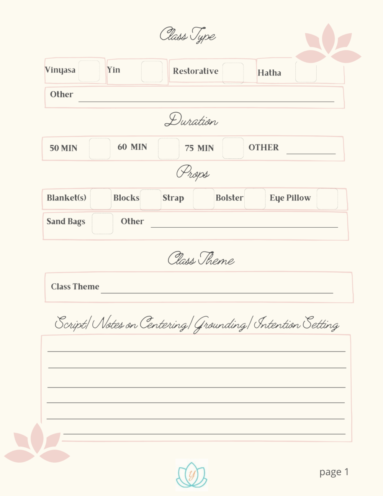Ah, the holiday season. The time of peace and calm, right? Not at all. In fact, for most of us it is one of the least peaceful and most stressful times of the year.
There are the pressures of holiday shopping, holiday travel, visiting with family and friends, decorating, meal planning and preparation, and get togethers.
For some, there’s a sense of loneliness, isolation, depression, and heartache.
Along with all of the above may come increased food and alcohol consumption, increased sugar intake, a deviation from their regular physical exercise, yoga and meditation routine.
Supporting Students During This Stressful Time
First, what is the “holiday season?” In the United States, the holiday season typically runs from Thanksgiving Day through New Years Day. However, with the commercialization of
the holidays, we begin seeing decorations in stores soon after Halloween. From there on out, unfortunately, the race is on.
The good news is you have been preparing students for these stressful times all along.
The teachings of yoga philosophy, asana, pranayama, and meditation, have prepared us all for how to deal with high pressure situations. We know what is truly important in this life. We know how to be compassionate with ourselves, how to accept others as they are, and how to surrender to situations out of our control.
We also know how to set boundaries and protect ourselves from the negative energy of others. We know how to listen to our bodies and trust our intuitions. How to fill our own cup – before we can fill others. Sometimes it just takes a reminder to set these practices in motion.
The Yoga Teacher’s Role
Our role during this time is to remind students of the tools they have in their toolkit. It is to encourage students to apply the skills they have learned in class and put them into practice. You can perhaps suggest they think of this as an opportunity for growth to become a better version of themselves.
In addition, we can provide opportunities to reiterate these important practices. Scheduling specific workshops to focus on self-care, incorporating class themes to support self-love and compassion, and leading students through nervous system resets using pranayama and meditation during regular classes is invaluable.

Suggested Themes, Workshops, and Meditations
Gratitude Theme
A great place to start is with a gratitude practice around Thanksgiving. I like to think of November as the month of gratitude, so anytime leading up to Thanksgiving is appropriate to use this theme. Gratitude places us in a mindset of thankfulness for all that we have – instead of focusing on all that we have to go through.
“Wear gratitude like a cloak, and it will feed every corner of your life.” ~ Rumi
Yamas and Niyamas Theme
It may be a good time to review the Yamas and Niyamas. Highlighting key foundational principles that may provide insight during this time. Ahimsa (non-harming), Satya (truthfulness), Brahmacharya (non-excess), Santosha (contentment), Svadhyaya (Self-study), and Ishvara Pranidhana (surrender) all could prove beneficial as we navigate through the months ahead. See the Series Themes Workbook for detailed class theme scripts.
Winter Solstice Workshop
A Winter Solstice Workshop can begin to shift students into a slower, meditative practice and peaceful state of mind for winter. Winter Solstice (the first day of winter) is the shortest day of the year (in the Northern Hemisphere) with the fewest hours of sunlight. From this day forward, the days begin to gradually lengthen giving us more daylight and something to look forward to as we head towards spring.
Rituals such as honoring the darkness and welcoming in the light can be included. This practice lends itself to slower placed yin or restorative postures. You can practice by candlelight, journal with gratitude prompts, release what no longer serves you, and set intentions to invite something new into your lives. You could connect with nature by creating an alter of natural elements such as dried fruits, nuts, berries, pine branches, etc. Consider clearing negative energy in the room with sage or palo santo to purify, cleanse, and start new.
“If everything around you seems dark, look again, you may be the light.” ~ Rumi
Self-Compassion Theme & Loving Kindness Meditation
Focusing on self-compassion can cultivate positive emotions for any individual suffering during stressful or challenging situations.
Below is a Loving Kindness Meditation, also know as Metta, to help enhance mental wellbeing.
Close your eyes and draw your awareness inside. Begin to notice your breath, taking even inhalations and exhalations. Feel the support of the mat and ground beneath you. Notice the spaces that are not supported below you. The space above you, and around you. Tune in to your breath and deepen it. Perhaps begin taking the three-part Dirga breath or Samma Vritti, equal breath.
Visualize the color green, which is the color of Anahata (heart) chakra. This can be done by picturing something that is iconically green (grass or an apple, for example), or simply by seeing the color itself in your mind’s eye.
Bring your attention to your heart center. Think of someone you love deeply. Send all your loving-kindness to this one person. Repeat this mantra in your mind, “May you live with ease, may you be happy, may you be free from pain,” as if speaking to this person. Next, perhaps think of someone with whom you struggle. Repeat the mantra and send that person all of your loving-kindness. Then think of yourself. Repeat the mantra and send all of your loving-kindness to yourself. Finally, think of all living beings. Repeat the mantra as you send loving-kindness to all beings everywhere.
Sit with these feelings for a few moments and return to your mantra anytime: “May you live with ease, may you be happy, may you be free from pain.”
Bring your attention back to your heart center. Notice any changes (physical, emotional, or both) that may have taken place during your meditation. Remember to return to this mantra when needed sending all of your love and kindness to yourself.
Bring your palms to meet at your heart and leave the base of your palms, your thumbs, and your pinky fingers pressing together as you fan the rest of your fingers out and away from each other, creating the shape of a lotus flower (Lotus Mudra) with your hands. Visualize a glowing ball of green light filling this energetic seal with love.
Acknowledge the time you’ve spent honoring yourself during this practice. Breathe into this space of love and self-acceptance as you take a deep inhale. Exhale as you bow forward with deep gratitude.
Read about all the benefits of a Loving Kindness Meditation here as described by PositivePsychology.com. This article links to guided Loving Kindness Meditations by Tara Brach and Sharon Salzberg, two very well-known meditation teachers.
“If your compassion does not include yourself, it is incomplete.” ~ Jack Kornfield
Final Notes
As a teacher, holding space for students during high stress times is a rewarding experience. It can be thought of as a gift to your fellow humans. People need more opportunities to slow down, connect with community, and place emphasis on self-care. It’s a great feeling to offer a stress-free zone for people to relax, release, and just be in the present moment.
“Love and compassion are necessities, not luxuries. Without them humanity cannot survive.” ~ Dalai Lama





